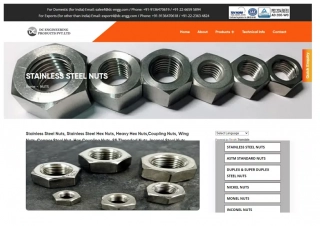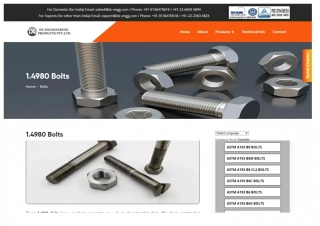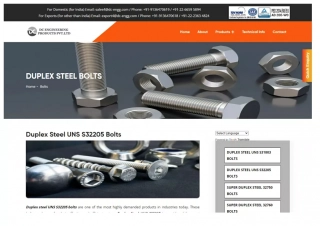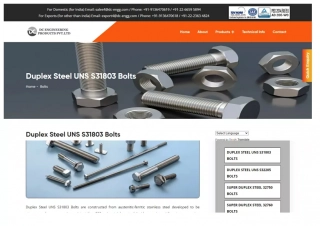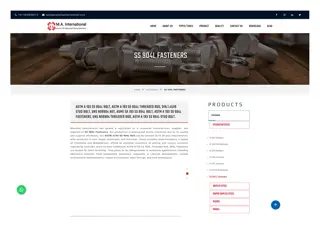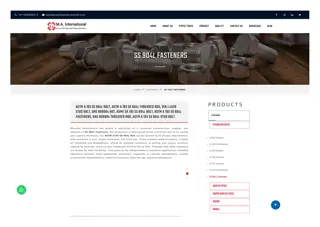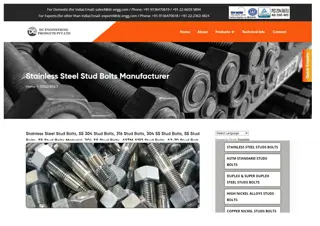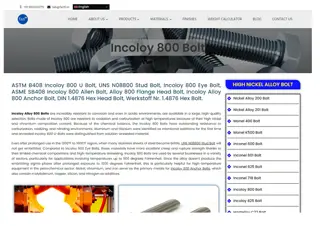Automotive Grade 10 Joining Methods: Bolts and Nuts
Learn about semi-permanent joining methods in automotive engineering, including using bolts and nuts, rivets, studs, and split pins on flat bar or sheet metal. Discover the calculation of drill sizes and key dimensions for screw cutting, tap drill sizes, and dimensions of keys. Explore semi-permanent joining applications and the types of bolts, nuts, and machine screws commonly used in engineering.
Download Presentation

Please find below an Image/Link to download the presentation.
The content on the website is provided AS IS for your information and personal use only. It may not be sold, licensed, or shared on other websites without obtaining consent from the author. Download presentation by click this link. If you encounter any issues during the download, it is possible that the publisher has removed the file from their server.
E N D
Presentation Transcript
Automotive Grade 10 Joining Methods Bolts and Nuts
JOINING METHODS After completing this chapter, you will be able to: Apply hand threading with the aid of a tap and die set Produce semi-permanent joints using any two of the following methods: bolts and nuts, rivets, studs and split pins on flat bar or sheet metal.
JOINING METHODS JOINING METHODS Calculation size of drills & key dimensions Drill sizes for screw cutting: This type of hole drilling is called the tap drill hole size. It is for internal screw cutting. The formula is as follows: Tap drill size = Nominal diameter the pitch If a M10 x 1,50 hole is to be prepared for screw thread cutting: M10 = Metric 10mm 1,50 = Pitch of screw thread
Tap drill size = 10 mm Tap drill M 8 x 1,25 = tap drill size = 6,8 mm size = 8,50 mm = Nominal dimeter the pitch - 1,50 mm Commonly used coarse thread series: M 6 x 1 = tap drill size = 5 mm M 8 x 1,25 = tap drill size = 6,8 mm M 12 x 1,75 = tap drill size = 10,2 mm M 14 x 2 = tap drill size = 12 mm M 16 x 2 = tap drill size = 14 mm M 18 x 2,5 = tap drill size = 15,5 mm M 20 x 2,5 = tap drill size = 17,5 mm
Width, thickness & length of keys Round or key pin The round key consists of a taper pin which may be used to fix collars onto shafts. The usual diameter of the key is 1 6 of the shaft. Key proportions & calculations = (???????? ?? ? ???) Width of key 4 (???????? ?? ? ???) 4 = 1,5 x diameter of shaft Thickness of key = Length of key Standard taper for taper keys = 1 in 100 or 1 : 100
Semi-permanent joining applications Semi-permanent joining applications refer to methods used to join different objects together, securely but not necessarily permanently. There are numerous ways of joining engineering materials together, but we will deal with only the following: bolts and nuts studs locking devices rivets, split pins and keys.
Bolts, nuts and machine screws A bolt is the term for a threaded fastener, using a hexagonal, square, round (knurled), recessed bolt; machine screws are normally characterised by a slotted head, but may have other drive configurations. There are hundreds of different types of bolts in engineering applications. Below are some common bolts showing various head configurations. Different bolts and nuts
Head styles Below are a few common head styles for bolts: Machine screws are normally characterised by a slotted head, but may have other drive configurations. A few are given below: Different bolt and machine screw heads
Drive configurations A bolt or screw s drive configuration will determine what type of tool is used to fasten it. Each drive type is designed for a specific purpose and has a special tool to drive it. Some of the more unusual ones, like the tri-wing, are used for tamper-proof applications, and are difficult to remove without the correct tool. Alongside are a few examples of different drive configurations. Different drive configurations
Body The body of a bolt is divided into the thread and the shank. The shank is the unthreaded part between the head and the thread. The thread on a bolt or screw can be divided into various categories; most bolts have only a partial thread while machine screws usually have a full thread. Different thread configurations Bolts are measured by the diameter and the length of the shank. For example, a bolt with a diameter of 14 mm and a length of 60 mm is known as an M 14 x 60 bolt. Metric bolts and screws are also classified according to the type of thread. The standard types of thread are known as ISO metric coarse or ISO metric fine. The head of any bolt is always in proportion to the body diameter. Thread is usually right-hand (bolt tightens clockwise), but can also be left-hand.
Point styles The point style refers to the end of the thread. Different points on bolts or machine screws are used for different purposes in engineering. Below are five most common point styles: Finish Mild steel bolts either have a black finish or are coated with zinc (galvanised) and some bolts and machine screws are also coated with cadmium. More expensive bolts are made from various grades of stainless steel or brass for their superior anti-rust properties but are mechanically weaker.
Studs A stud is a fastener threaded at both ends with an unthreaded shank in between. One end is secured into a tapped hole (often blind) and the other end fastened with a nut. A typical application for a stud is for fastening components together such as the cylinder head and engine block of an automobile engine.
Nuts Nuts are generally used in conjunction with bolts and studs. They are generally hexagonally shaped and available in a wide variety of forms for specific engineering/production purposes. As can be seen from Figure 5.7, the nut s thickness and width (across centres) in proportion to the diameter of the hole Figure 5.7: This diagram shows the proportionality between the thickness and width of a nut





